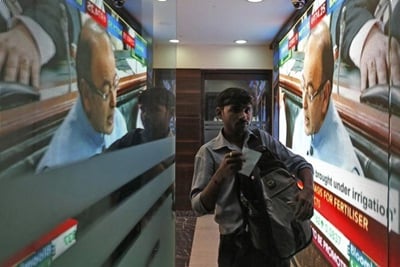Budget 2017: Union Finance Minister Arun Jaitley will table the Economic Survey in Parliament today. The Economic Survey is a report card on the economy during this fiscal that will also show the direction of government policy in the year ahead. It will be followed by the presentation of the Budget 2017 on February 1. The Survey is expected to indicate the government’s priorities and thrust areas for the forthcoming Budget.
The Finance Ministry of India presents the Economic Survey in the parliament every year, just before the Union Budget. It is the ministry’s view on the annual economic development of the country. A flagship annual document of the Ministry of Finance, Government of India, Economic Survey reviews the developments in the Indian economy over the previous 12 months, summarizes the performance on major development programs, and highlights the policy initiatives of the government and the prospects of the economy in the short to medium term. This document is presented to both houses of Parliament during the Budget Session.
You may also like to watch
[jwplayer i0PPmNBT]
Meanwhile, early presentation of the Budget would mean that the entire exercise is over by March 31 and expenditure as well as tax proposals will come into effect right from the beginning of the new fiscal, thereby ensuring better implementation. As per the earlier practice, the budgetary exercise was completed only by mid-May and with the monsoon arriving in June, most of the schemes and spendings by states did not take off until October, leaving just half-a-year for their implementation.
You may also like to watch
[jwplayer P0S2v4d8]
1. With the Budget session of Parliament scheduled to start from today, a day before the Union Budget is to be presented, President Pranab Mukherjee will address both Houses of Parliament at 11 am in the Central Hall of Parliament House.
2. Former Prime Minister Manmohan Singh had released the “Real State of Economy 2017”, a document prepared by the Congress research and said it speaks about the state of India’s economy, its many issues and where it is heading. “That the Indian economy is not in a good state is obvious. Even IMF has downgraded our GDP growth and it will not be 7.6 per cent but less than 6.6 per cent,” he had said.
You may also like to watch
[jwplayer mFgnbiP4]
3. Citing some of the indicators, Power Minister Piyush Goyal had said consumer inflation fell in December 2016 to 3.41 per cent, the lowest since November 2014. Besides, there is rise in FDI inflow, forex reserve, and GDP growth, he said, adding fiscal deficit and current account deficit (CAD) is consistently falling. The CAD has declined to 0.3 per cent of the GDP and it is expected that it will come down to zero in the next 3-4 months, he had said.
4. Markets regulator Sebi and stock exchanges has asked the exchanges, as well as clearing corporations and other market infrastructure entities to ensure enhanced vigil in the wake of the presentations of the Economic Survey and the Union Budget on February 1, according to report. The surveillance and risk management systems have been reviewed minutely to tackle any eventuality arising out of any high volatility and to check any manipulative activities.
You may also like to watch
[jwplayer Apxqzvlf]
5. Incentives or schemes for farmers and rural India, women and social sectors like health and education may be cornerstone of the budget. Besides agriculture, the Finance Minister may announce schemes for boosting domestic manufacturing and promoting start-ups. Tax experts and economists said the government may hike the service tax (currently at 15 per cent) to align with the Goods and Services Tax (GST) regime.
(With agency inputs)


